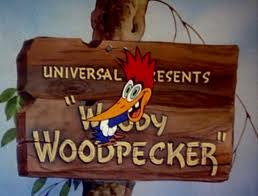Early Cartoons - How Did the Animation Go Wrong?
Author: CaitlinFulleFor example, have you ever compared a 1940's Looney Tunes cartoon to a 1960's Flintstones cartoon?
You know before I begin, if you're interested, why don't you Google, sit back relax and take a look at the two cartoon videos I listed below. See if you can point out something different about them, and of course you don't have to watch them. But if you can for fun, just take a peak.
The first video is a Looney Tune cartoon short of Daffy Duck/Elmer Fudd called To Duck or Not to Duck. The cartoon short was a Warner Bros. production that was released to theaters in 1943. Yes, that's right 1943...
The second show is a Flintstones cartoon, No Help Wanted, which premiered on ABC's TV network in 1960. Yes, Once again 1960...
So go head, don't be afraid to give it a shot, take a look and I'll come back later. Trust me, I'll be right back.
Okay, so notice any differences? Yes? Of course you did! But for fun let's assume you didn't.
Though by looking at the two videos it's blatantly obvious that the animation in Looney Tunes seem much more fluent and exciting. Personally, I was drawn in by the exaggerations of the animation. Where as, the Flintstones portrayed little to no animation movements at all. In fact, I was getting very annoyed by the constant isolation of the bobbing heads.
I was having constant reminders of driving to work, seeing the Bobblehead bobbing back and forth in the corner of my eye on the dashboard. With all honesty, I can't believe this was even considered to be a form of animation. But hey, I guess it falls under the same thought of Taylor Swift being a country artist.
So why the step back? Why is a 1943 cartoon more visually appealing than a 1960 cartoon? (And even some of today's cartoons.)
Simple, ready for it?
Back in the 1940's and even before the 1940's, cartoons were called 'theatrical cartoon shorts'. These cartoons were originally released to theaters and only theaters. They were considered side shows or previews for a premiering live action film. Most cartoon shorts were only about 5-7 minutes long hence, the reason they were called 'shorts'.
 |
| Woody Woodpecker was among characters created in the 1940s. |
But the real key to why these cartoon shorts were more appealing than early TV cartoon shows were due to a few things.
First, there were on average, approximately 10-13 theatrical cartoon shorts produced per year for a giving studio, with each cartoon being only a few minutes long. However, for TV cartoon shows, studios were producing a new show each week with a total run time of approximately 20 minutes.
Of course to effectively produce a 20 minute show each week, the quality of the animation had to be cut. Often times animation cells or backgrounds would be re-used multiple times in different shows. (You'd probably noticed this a lot.)
For animators and the animation studio, the process wasn't very fun, challenging or thrilling. But as for networks, they did not care if the animation was good or bad. The only thing they cared about were the ratings.
But wait... There's more...
Animation studios for TV networks were given very small budgets. In the early 1950's studios were given approximately $2,500-$3,000 to produce a 20 minute cartoon. Does it sound like a lot? Well it does until you compare the cost it took to produced the worlds first Technicolor cartoon short Flowers and Trees (1932), which turns out to be a whooping $27,500 with a runtime of 8 minutes.
Honestly, I can't even imagine animating a 20 minute cartoon show for a mere $3,000, talk about trimming out the fat. Though, if being pushed on the brink of an edge; there are only two options, fall over or push your way out. Luckily, these animators and animation studios found a way to push their way back into the cartoon animation business. Otherwise, we'd all be stuck here watching Desperate Housewives and Days of Our Lives.
Dominique Edwards is the founder and owner of Netoonime: The Evolution of Cartoonime, a website for cartoon and anime fans that offers fun and entertainment in many different forms, such as: quizzes, informed and personal articles, polls, discussions, trivia, puzzle games, and video clips that are based on cartoon and anime shows, movies, and history.
Article Source: http://www.articlesbase.com/art-and-entertainment-articles/early-cartoons-how-did-the-animation-go-wrong-4131520.html

No comments:
Post a Comment